Message about the ancient city of Gorgippia. Gorgippia - an ancient antique city and the kingdom of Hermes
Nowadays, Anapa looks so stylish and modern resort that tourists, especially not fond of history, do not even suspect that earlier the ancient Greek city of Gorgippia was here, one of the richest cities of the Bosporian kingdom. He was erected in the second half of the VI century BC. And successfully flourished for about ten centuries, while during one of the enemies raids did not burn him, and the life in it slowly faded.
Gorgippia is located in Anapa on the northeast coast of the Black Sea in the center of one of the most famous resorts of Russia in the west of the Krasnodar Territory.
At first, the settlement was called otherwise - the Syndskaya Harbor (the representatives of the Sindov tribe lived here, and already in the middle of the Greeks) and it existed as an independent city-state, having a well-established relationship with nearby settlements - Pantikapeeum, Bata, Hermanss, Fanagoria.
There is nothing surprising in the fact that some time later, in IV Art. BC, Greek colonies located along the northern coast of the Black Sea, decided to unite into one state - the Bosporus kingdom. As a result, the Sindian harbor was renamed in honor of the brother of King Gorgippa, who was appointed here by the governor.
Gorgippia was not just a trade and craft center, which was still, but also a border fortress, and soon became one of the most important and rich cities in the region (the city was successful, that even had the right to minted its own coins - silver drachmas ).
Museum City
The remains of this settlement in our time can be seen in the Anapa Museum, the area of \u200b\u200bwhich takes about 2 hectares. First of all, these are the foundations of the ancient blocks, dated II-III Art. N.E., Mainer, Wells, Winery, Defense fortifications. Here you can see fragments of the facing materials of the sanctuary and columns of the settlement, sarcophages and tombstones.

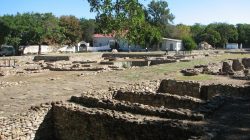
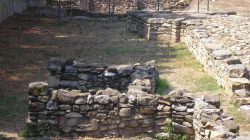
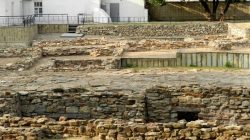
There is also an indoor museum, in the exhibition halls of which found figurines, sculptures from marble, painted dishes, amphoras, coins, weapons are stored.
Appearance of the city
Despite the fact that only basements remained from residential buildings of the city, scientists and historians still managed to more or less establish how the Gorgippia looked like a few thousand few years ago. The work of archaeologists was not easy, since Anapa is built very tightly, and excavations can be carried out only where construction is underway or in the courtyards of modern houses.
Gorgippia was small - its area was 38 hectares (0.38 km. Sq.), And the width of the main street was about eight meters. The main highway of the city stretched along the coast, closely approached the city gate, and outside of Gorgippies led to a wide traid path, which united the Crimea with the Caucasian pass.
The first six centuries of their existence of Gorgippia Street were paved with cobblestones and wreckage of clay jugs (traces from passing wagons were preserved at the found bridges of this type).
The roads of a later period belonging to the I-III Art. AD They were laid out of huge flat stones laid on a layer of clay and rubble. This coating turned out to be so strong that dump trucks, loaded land, did not cause him the slightest harm on it during the excavations. 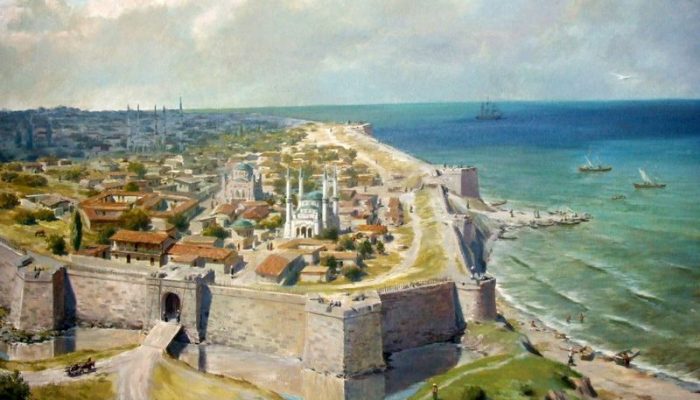
Built residents of the house mostly along the coast. Houses of ordinary residents of the city were erected from clay. Rich inhabitants in the construction of their housing were used stone, burned bricks and tiles. The windows of the houses were tightened by bull bubbles.
At home, nobles were located in the city center, on the main square. Gorgippia contained small buildings. The buildings were low, had no more than two floors and consisted of three-four rooms. On the first floors were most likely shops or craft workshops.
Interestingly, the ancient architects during the construction of Gorgippies have provided a system of water pipes and waterproofs - one of these channels was discovered during the excavations: he walked along one of the streets, approached the sludge well, in which the water was filmed, as a result of which garbage remained at the bottom, and Purified water was shown in the sea.
Gorgippia was divided into blocks, in each of which lived a certain category of the population - the preserved quarters were best preserved: during the excavations, numerous amphoras, dishes were found, figurines. 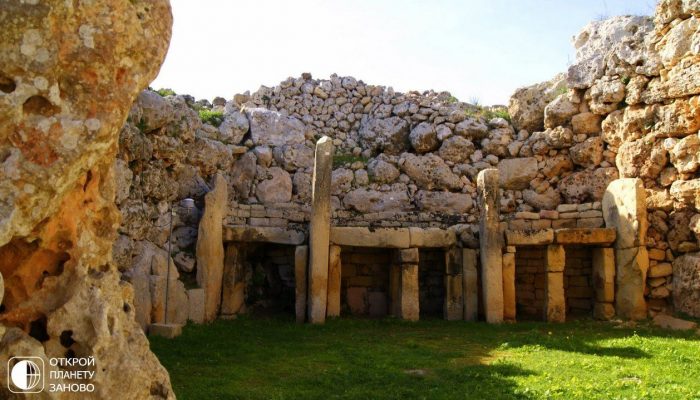
A number of production complexes were also found in the city (almost all found items can be seen in the territory of the Museum equipped here):
- tanks in which the fish was caught;
- rooms with davile vessels in which wine was made, and in them - barrels with a capacity of about 6 tons;
- pottery furnaces;
- there were even traces of metallurgical production.
Scleps
In the seventies of the last century during the construction in Anapa, a unique monument of Hellenic culture was found - the painted tomb of the Greek aristocrats, which researchers were called "Cyrp Hercla". It was cut down in a rocky soil and was in a meter from ground surface (At the same time, the height of the walls was more than three meters).


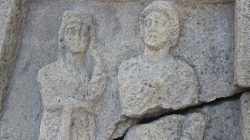
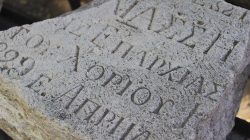
The walls of the tombs were made of monophonic stone blocks, and the arch is designed so that it was easily withstanding heavy overlap. You could get into the tomb through the well (the sarcophages were lowered down through it). After that, the entrance to the stone well was reliably closed and fell asleep by pebbles (unfortunately, it did not stop the robbers who were able to get into the crypt, pull out and rob the dead, and also to endure everything valuable from the tomb).
The only thing they could not capture with them is unique wall murals made by natural colors. Most of them are now in Moscow at the restoration, but sarcophagi is stored in the Anapian Museum.
The walls above the floor over the entire perimeter of the tomb of the band washing the string of the red color, and various vegetation was drawn over the entrance, the tricks and scenes of hunting. Above is another strip with large red ovals or zigzags. A columns with decorated capitals were drawn between ovals. A draped fabric with fringe and brushes hung over this strip, and the pictures telling about the 12 exploits of Hercules, because of which the crypt and got their name.
Next to stories about the life of the Greek demigod - a drawing depicting meals: a bearded man was sitting at the table, on the sides of him there were two women in bedspreads and two young people. Also in the tomb was another drawing depicting a seated woman and a man, near which the young man stands. Around these figures - trees, peacocks, turtles, and over the heads of the couple you can see a circle with the snakes. The ceiling of the tomb is drawn a circle with ornamental border, in the center of which there is a multi-colored sixiest socket.
Interestingly, this tomb was not alone: \u200b\u200bnext to the "crystal herakla" researchers discovered another tomb with two sarcophagi (the robbers did not know about it, and therefore they did not robbed). In the first sarcophage, a notable Gorgipien was buried, and in the second two girls (gold jewelry and other decorative funeral objects were indicated on their social status.
Wheel
About who destroyed Gorgippia, the Hermanss and other cities of the Bosporian kingdom, written evidence before us did not reach us. In the second century, the city after cruel battle was under the authority of the Roman Empire, then at the beginning of the third century goths invaded, and the city itself was almost completely burned during a fire after 238. 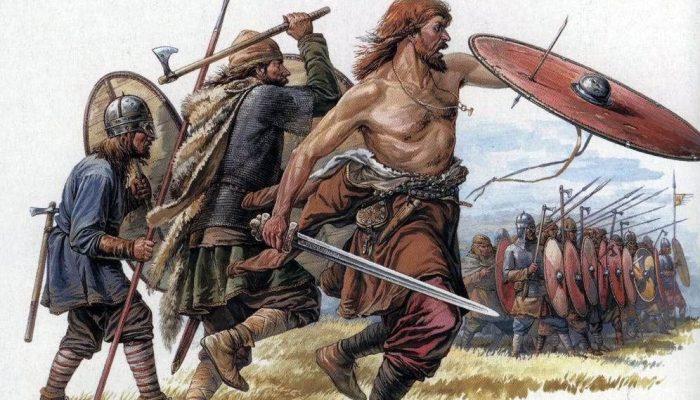
Despite the fact that the locals who survived during a disaster were able to restore the destroyed dwellings, unlimited destroyed defense walls could not: money and strength for construction work after numerous raids were left. After a hundred years, Gunns came to this territory, and the history of life and prosperity of the cities of the Bosporian kingdom was completed.
Only 49 photos
As always, everything happens too by chance. Well, who knew that I would be on the ruins of an ancient ancient city only two days ago? Circumstances someone folded so that I went to Anapa for a whole week, including on business. Pre-rummaged with search engines about the attractions of the city of Anapa, I learned that directly in the city feature there is a unique excavation of the ancient antique city of Gorgippia. This, let's say straight, I was extremely surprised and inspired. In Anapa, I was never. In childhood, my parents took me only to the Crimea, so that this part of the Black Sea coast was by definition was the terra-incognita for me. I continued to be interested in Gorgippia, at the same time collecting things and dealt with its origin, historical details and swirling human destinies. Gradually, in front of me began to pour the fancy picture of this part. ancient Mira, early history of our Motherland. In the soul, I felt a familiar exciting flavor of anticipation and inspiration from the possibility of immersed in my feelings in the ancient layers of the Greek ancient city, in the feelings and passion of its inhabitants, in their life and death as part of the great path of all mankind ...
As it turned out, Greek settlements in the Black Sea region had a lot. According to archaeologists, it can be said that these cities were located on the Black Sea coast at a distance of 5-10 km. From each other, and even closer, which is quite dense accommodation for ancient settlements. However, we are interested in the Asian part of the Eastern Black Sea coast. Curious, but it is here in the sorts of beginning Caucasian Gor. He suffered chained to the Caucasian rocks of Prometheus, referred to here Zeus to suffering, for the fact that he conveyed to people the sacred fire of knowledge.
02.
Sinda and many other tribes lived in this area. There were no time to live in Scythians, and they were subsequently ousted by the Greeks subsequently. The Greeks were also founded by Panticapy, which was located on the eastern part of the modern Crimean Peninsula and other cities, including in the Malaya Asia and the Eastern Black Sea part of it. The second city in its meaning after Pantikapei was Fanagory, it was located in the eastern part of the coast through the Kimmerisk Bospospore (Strait), and even east in the V century BC in the foothills north Caucasus The city of Sind or Sindica was founded - the future Gorgippia.
03.
Before the war with the Persians, the city did not obey the Bosporian kingdom (these are the Greek cities-colonies, combined into a single state), and his king Satir, while the Greeks warned the war with Xerxes decided to master the Sindica, but was intensified in political intrigues, a label and war against the Sindian Tsar Penate And, in the end, died of overvoltage and loss of his younger son. The archon (by the hereditary ruler) of the Bospod was his wise and far-sighted senior son Levkon. He sent his brother Gorgippa to Cindica and that using his talent policy, by negotiation and generous gifts, bowed to the Sindica to the world and became there the first governor of the king of the Bosporian kingdom. It is interesting, it was this year that the battle of the Greeks with Persians in the Fermopyl Gorge occurred, where King Leonid and his 300 Spartans were killed, which is now known to every student.
04.
So, in the 4th century BC Sindica entered the Bosporian kingdom and was his key border city. The new name - Gorgippia was granted to the city as the merit of Gorgippa in front of the Bosporian kingdom for his great acts, as the sources say. The Levkon reigned in Bosporus forty years and received Athenian citizenship, although he was not at all the Greek at the origin. His sons of Spartok and Parisad were confirmed from the Athenian people regarding the advantages, their father and grandfather Satir. From Spartoka, the dynasty of the Bosporus kings - Spartokidov. They reigned about three hundred years and were the faithful allies of Greece. Complied with a general order. Local Scythians paid the Bosphor moderate tribute and power held from raids. In the Bosporian kingdom there was a strong fleet, he defended the entire Black Sea coast from marine robbers.
05.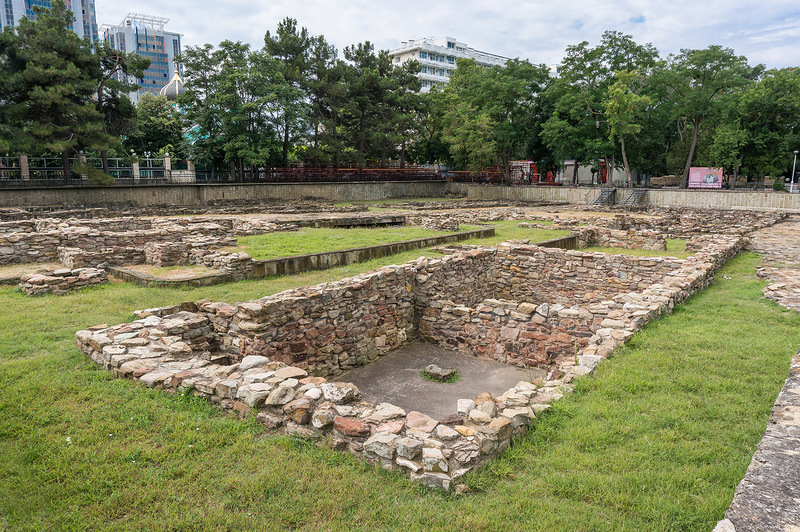
When Mithridate Evpator Gorgippia nominated the most important cities of the Bosporian kingdom. In subsequent years, the city continued to flourish and rich. Public buildings were erected here, their own silver coins were minted, large roofing tiles were made in the workshops of the pots. While levkone in Gorgippia, self-government was introduced within the framework of the civil community.
06.
Gorgippia was a significant, very rich city, the shopping center of all Malaya Asia and large and key seaport. Already, more than one hundred years, Greek merchants delivered wine here, fragrant oils, graceful black-eyed Greek dishes, expensive fabrics, jewelry. They took the same in huge quantities of wheat, skin, fur, cattle, honey, salty fish and, of course, slaves. By the way, in Athens, at the agora, at the time the statues of Satira, Perisada and Gorgippa from the "Grateful Athenian People" were established.)
07.
The only one for us is an eyewitty travel to the "live" Gorgippia was a historian of PAsani. He also told the world his impressions of visiting Gorgippiya in his "Description of Eldla" in the 11th book in II century. ad. Therefore, while we will follow his travel diary.
"... When you get into the Gorgippia on the ship from Pantikapey, then you see how the sandy plain shore is increasingly issued in the sea, forming a cape who cuts the magnificent bay.
08.
"... however, if your ship passes the bay, and it will be offsetting this cape, then a completely different picture will open - a high shore, smoothly turning into harsh lifeless mountains, almost falling down in the sea. Nothing amazing that to exactly these rocks, by order of Zeus Hephaestus chained Prometheus ... ".
By the way, this terrain is now in line modern City Anapa and locals call her "High Bank".
09.
"... The city itself gives an impression even on Ellina who arrived from Egypt. The main urban street stretches from the west to the east along the sea, from the Western gate to Agore. The street is wide, not less than 18 elbows (one elbow - 40-50 cm), has been removed with huge stone plates, up to three elbow long, and completely new. The plates are made thoroughly on a powerful layer of subflowing and tamping, in some plague, the old bridges can be seen under them. Under the plates of new pavements pass by the waterproofs connecting with the catchment wells ... "
10.
11.
12.
13.
"... nine main street, along the coast, there is another, width of 8-9 elbows. Longitudinal streets cross the transverse, 10-16 elbow widths and divide the city on the right squares, side by 100 cords. Walls of houses are adjacent to the streets, each of the sides of which has at least 20 elbows. Roofs of houses are covered with tiles, part of it is clearly brought from Sinopa (Greek colony on black Sea coast In modern Turkey) ... "
14.
15.
"... In the courtyard of each house there is either a well, or a plastered tank for rainwater coming from the roof of the house. In the house itself, a huge basement with a stone staircase ... "
16.
17.
"... From the yard take the beginning of the channels of the waterproofs made of neatly processed stoves with a gutter ... The yards are paved either by stone plates or sea pebbles, the floors in the earth rooms with clay coating, the walls are plastered and mostly painted ..."
18.
19.
"... In the western part of the city, I saw an interesting two-story building, which, as I was explained, belongs to local winemaker. The house consists of three premises located in its northern part and a large powerful courtyard located in its southeastern part. From the West, the winery is adjacent to the building, consisting of two rooms - pantry and room with davile vessels and two impressive reservoirs of tanks - one in 700 attic hoevs (one xy - 3.3 liters), the other on 100 jeys more ... "
20.
"... Houses built by the Romans are distinguished by large sizes and wall thickness and, as a rule, contain terms. One building of the Roman barracks is located in the city center, more in the Eastern Gate ... »
21.
22.![]()
23.
"... during your stay in Gorgippy, I saw the construction of new temples. Theater was rebuilt, now he was adjusted to the simple tastes of the Romans, which means that he had to be suitable for conducting gladiator fights.
At the entrance to Agora, the courthouse and gymnasium are open.
On the self central Square - The temples dedicated to Poseidon - the Lord of the Marine Element, Demeter - the patroness of the farmers, Aphrodite - the fan-chip destroy of navigators and certainly - the Savior Zeus. This is really the dwellings of the gods. They are striking with power, and even the heavyness of their forms.
From the statues, my attention paid a huge sculpture of Athens, the patron of Hercules. As I was explained, this is the work of a hypathodor, made by him to the 102nd Olympic Games and redeemed at Megalopians Mithridate, especially for its border city of Gorgipia ... "
24.
25.
"... I also saw Stel, where the names of the young men, who won in the annual competitions on the beloved God and the patron of Gorgipies were carved for 300 years.
26.

"... In addition to trading operations, Gorgipies are engaged in many crafts. I have seen ceramic, pottery, tiled, stone workshops. I was called the names of skillful masters - jewelers, artists, sculptors ... "
27.
Winery.
28.
29.
30.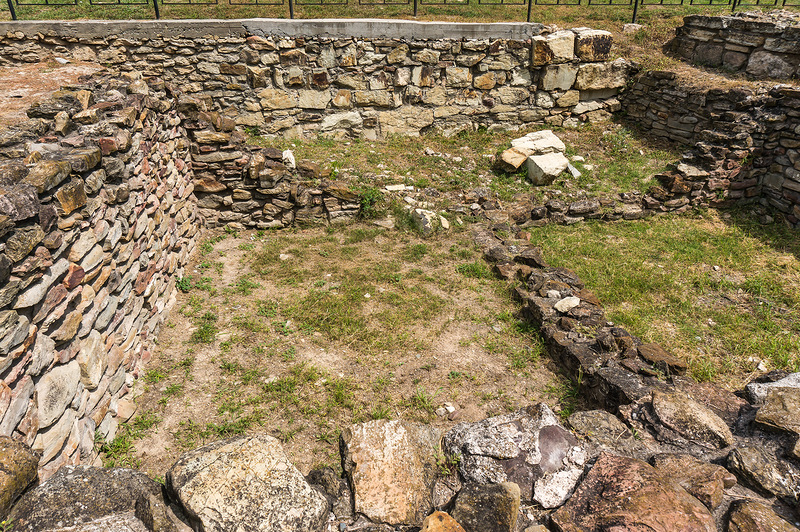
"... under the city, in his sublime part, I was shown underground labyrinths, but who, when and why did they build them, no one knows ..."
That's how!?! There were also labyrinths! Really curious!
In the photo you see only a couple of excavated quarters of an ancient city area of \u200b\u200babout 1.5-2 hectares. The total area of \u200b\u200bthe whole city was about 40 hectares! Modern Anapa is entirely located above ancient GorgippiaAnd it is unlikely that it will be shown to us by other parts for obvious reasons.
31.
In IV century BC E., apparently, the planning of city districts of Gorgippia has already been scheduled. This is evidenced by the orientation of the walls and the direction of the streets opened in the layers under the extension II century. There are distinct traces of street leveling, starting with IV century. BC e., in the form of alternating layers of ceramic submet, gravel and crushed stone.
32.
33.
On the existence during the Hellenism of the streets in the same place where they took place in the first centuries of our era, testifies and laid by the doorway, whose threshold corresponding to the level of the street IV century. BC e., in II century. n. e. It turned out to be more than a meter below the stone pavement level.
The city was burned and destroyed by Goths in 238 of our era. Gorgippia is one of the first to take this unexpected and catastrophic punch of the barbaric tribes from the Baltic. Part of the inhabitants were killed, all the others took into slavery - it was the main fishery ready. On this, his glorious antique story ends, but the other is gradually ...
34.
35.
The archaeological excavation of an ancient city is right at the main city beach Anapa, which, it seems, should give him a pop taste and the presence of a large crowd of curious vacationers.
36.
But, thank God, it turned out that the demand for visiting excavations is not high at all. While I photographed the ruins, almost no one was near, and I could calmly immerse yourself in my feelings and thoughts about this curious place.
37.
If you try to cover the excavation in one glance, slightly defoculating your vision, then this will begin to manifest this amazing city, the city of worker, the city of Warrior, the artisan city, the city of sea merchants and slave trade.
38.
The image of a living city did not leave me after this all the time that I was on the excavation. Roads, streets, walls of houses - everything is laid as a ruler.
39.
In thoughts, they stumble slightly when you see these foundations folded from a girlfriend clumsy building material bonded by lime mortar and clay. First, as always, you expect large regular stone blocks laid on the edge of the temples ... However, who knows!? Maybe elsewhere, where, for example, Agora was located (public center of the city) is just the remnants of such thorough buildings. And this quarter, most likely, was located somewhere on the outskirts of the city. Indirectly, this confirms the surviving Turkish watchtower, which is very close to the city, built on the grounds of the ancient fortress walls of the city and served for the city eastern goal.
40.
41.
42.
So what did I feel while here? First of all, I wanted to stay on the city of Anapa. The center of this city has some kind of unique dynamic and pure energy. Being on the streets of the city and in the evening and in the evening you feel some kind of business, open joyful and light energy of life movement and everything around. I never felt like this in other resort cities, Anapa was dramatically distinguished from this unusual indicator.
43.
At first I could not understand what's the matter. And then, thinking, understood, the entire center of one of the greatest cities The Bosporus Kingdom is built up by the resort. All these numerous sanatoriums, hotels, shopping streets, squares, squares, attractions are located above the buried antique city, which never lived a calm provincial life. Millenniums were boiling here, a brisk trade was shy, the crafts flourished, there were endless caravans of ships, the people were changing, the peoples were changing ... and in this carousel of life there was the spirit of this city formed by thousands of years. Now, we would call him Egregor.
My reflections began to turn into a slim and amazing stream of thoughts and images. I, suddenly, with surprise, I understood - the spirit of the city lives and flourishes so far. He does not live in the ruins of the ancient city, he lives with feelings, thoughts and passions of these people who come from all over our huge country. These human streams are not dried, all new and new people come here, getting their unique and at the same time unconscious experience of admission to the great shopping center of antiquity, giving him part of its energy and getting in return to the unique feeling of life, rest and dissolving in the energy of the great ancient city of navigate and merchants.
44.
45.
The flow of thoughts and impressions intensified. And, suddenly, I realized, whose irrepressible energy was able to survive here and continue to flourish. His name sounded as if from everywhere. This is Hermes! After all, the PAsani mentioned that here among many temples stood the temple of God Hermes, the god trade, profits, rationality, dexterity, ruting, deception, thieves and eloquence, giving wealth and income in trade and he was the patron of Gorgippia. Well, of course, Hermes! For sure! How did I immediately guess!? Hermes Patron Glashetayev, ambassadors, shepherds and travelers, patron of magic ... Suddenly, some second vision I saw the figure of Hermes standing for me. Hermes looked straight on me, on his face I saw a turning, dubbing and at the same time a multi-valued good and a patronage smile. We looked at each other. Hermes raised his right hand, making a smooth beautiful gesture, as if something outlined in front of her. His figure looked like a revived wicked marble statue.
"My city," suddenly gentle and firmly said Hermes looking straight into my eyes. Fallen a gust of the wind, which led me into a real feeling. The figure Hermes melting and her outlines remained as if somewhere in my enthusiastic imagination ...
46.
I was in a completely different part of the excavated Gorgippy, not at all where he remembered himself and where he began to reflect on the fate of Gorgippia and Anapa. It turned out, I am on the excavation from the opposite side of the embankment. Along this part of the ancient quarter, dense beautiful Pitsundsky pines grow. Somehow I moved through the fence and was here alone in the shadow of these pines. There was no one, only silence, grace and calm. In the soul reigned some raised harmonious sensation. Healthy! I, even could not count on such a response. Hermes! Wow! Now everything becomes in its place. That I was the dextion of the foundations of this quarter seemed some empty and abandoned. The God of Trade and Profit is simply adapted, changed his role. Now he is "heading" by this flow of holidaymakers from the whole country. What, smart, as they say. Imagine which energy feeding is provided by all these people! There is a fancy interchange with feelings, emotions, saturation of people in the energy of the holiday and rest. All the same, the gods did not disappear anywhere, they change as it changed all this freaky world around us. Hidden by this discovery and trying to comprehend what happened I went to inspect the Museum of Gorgippy, but this is another story (and
The site of the Anapian Archaeological Museum: http://www.museum.ru/m1364
Website V.M.Suppotatsky about Gorgippia with reference to PAsania: http://www.supotnitskiy.ru/stat/stat43.htm
Website about Anapa and its attractions and nature in general, and Pitsundskaya pine, in particular: Press here
Wikipedia about Gorgippia with a mass of systematized historical dates, names and also a map of the Bosporian kingdom map: Press here
At the end of the 6th century, the ancient Greek Polis of Sind (Sindic) was founded in the Black Sea coast of modern Russia. He was in the territory modern Anapaand was built on the ruins of the ancient city of the tribe of the Sindov. At the end of the 5th century BC, Polis even minted his silver coins, which were depicted the head of the horse and the inscription "Σινδον".

The ancient Greek city of Gorgippia, excavations
In the 4th century BC e. Sind falls at the beginning during this period greek policies Combined and created, which ruled. In the 430s, BC. The governing dynasty has changed on the biploral, the throne was settled, the sind was put to edit Gorgipp. Gorgipp was his son, the brother of the king. The new ruler has a beneficial effect on the policy, he took care of a new planning of the growing city, helped the sealing of trade, a tile with a round brand "Γοργιππου" began to be produced during Gorgippe. As a result, the policy receives a new name, in honor of the ruler - Gorgippia.
Polis is traded with Herakley, Sinop, Chios, Lesbos, many other Greek provinces. The colonists began to master the production of wine, which was also exported to different countries. In Gorgippies, archaeologists discovered the remnants of cult builds in honor of the Greek gods, the locals of Artemis, Hermes, were particularly honored.
In the middle of the 3th century BC e. In Gorgippia, a major disaster occurred - a fire, in the heat of which died all at home. In the second half in the rebuilt policy, problems again arise, this time in the field of trade. Mediterranean markets no longer need a bosporous bread, as they receive it from Egypt. At the end of the 2nd century BC, Gorgippia begins the chasing of his drachma from silver. In the first century, the city is part of which rules.
It follows the troubled time when Gorgippia shakes the restructuring and fires, only at the beginning of the 1st century of our era on the throne of Gorgippy dates back to the king from the new Savromat dynasty. This dynasty was friendly to the Romans, so life in the polishes becomes peaceful for a while. King Savromat restored the destroyed fortress walls of Gorgippia, developed trade with Roman provinces. The period of the breakdown of the policy came, the cult facilities are being built, Boyko comes trading, set statues.

At the beginning of the third century, our era on the territory of the Bosporus kingdom appeared hostile tribes of the barbarians (). Gorgippia fell under one of the raids, the city burned in another major fire. After that, the policy was no longer rejected again.

Today, resting in sanatoriums and guesthouses Anapa, you can walk to the city center, where the museum under open sky. There you can explore the remains of ancient dwellings, the foundations of houses, the remains of the walls, the cobbled streets, the ruins of wineille, workshops. Here are the ancient sarcophages from the crypts, marble slabs with inscriptions.
Works of art - everything that is the result of human labor activities. Real sources, in contrast to written, do not contain a direct story about historical events, and historical conclusions based on them are the result of scientific reconstruction.
A significant originality of real sources caused the need to explore their archaeological specialists who produce excavations of archaeological monuments, examine and publish finds and the results of excavations, restore the historical past of humanity according to these data. The archeology has a special meaning to study the epoch, when there were no more writing at all, or the history of those peoples whose writing was not and at the later historical time.
Archeology extremely expanded the spatial and temporary horizon of history. Writing exists about 5,000 years, and the entire preceding period of human history (equal, according to the latest data, almost 2 million years old) became known only due to the development of archeology. Yes, and written sources for the first 2 thousand years of their existence (Egyptian hieroglyphs, a linear Greek letter, Babylonian clinies) were open to science archaeologists. Archeology matters for epoch when writing existed to study the ancient and medieval historySince the information entrusted from the study of real sources is significantly complementing the data of written sources.
All the monuments of history and cultures in Russia and in the world have
Great value (first of all for the inhabitants of the region). A special place among them is occupied by the monuments of archeology, which include the remains of ancient settlements (settlements, selers, fortifications), the ancient mounds, the remnants of industries, ancient roads, canals, places of ancient burials, individual sections of the historical, cultural layer of settlements.
One of the archaeological monuments and is considered in this work is the city of Gorgippia.
Gorgippia (Greek Γοργιππία) - it antique cityToday, Gorgippia is located on the territory of modern Anapa.
The settlement is located in the center of the modern city of Anapa. Partially excavated urban quarters, rich burials.
Anapa Created a Museum-Reserve
Nick "Gorgippia" in the open sky, which presents the stalls of the streets, foundations and walls of housing, remnants of workshops, wineries, fishery
Salt baths, marble plates with inscriptions, extracted from the necropolis of sarcophagi local nobility, etc.
- ^
The history of the ancient city of Gorgippia
"Quick-haired rose" called Greek antiquity German philosopher Hegel. One of the outskirts of this amazing flower was a Greek colony, based on the Anapskaya Bay in the second half of the 6th century BC on the Earth of the local tribes of the Sindov. City N.
Forces name Sindic.
Later, the Greeks appear in Sindica - immigrants from Asia Minor. They peacefully got along with sinders, they were united by joint classes, crafts, the need to defend themselves from attacking enemies. This forced the neighboring Sindica of the Greek Colonies Fanory, Kpay, Patus and other policies, located on both sides Kerch Strait. (Bospore Kimmeria) to unite into one state - the Bosporian kingdom.
The city of Gorgippia emerged no later than the beginning of the V c. BC. And it was built as a result of the following events.
Tsar Levkon (390-348 BC) sent to Cindica as a governor of his brother Gorgippa, who stopped civil wars and subjugated the Bospore's Syndian tribes. With the Tsar Gorgippe, the layout of residential neighborhood was carried out, active construction began, crafts developed. At the suggestion of the speaker, Demosphena in Athens, the statue of Gorgipp for special merits in front of the metropolis was erected on Agore. In his honor, the city and got the name Gorgippia.
The economic basis for the development of the city and the well-being of his citizens was agriculture. In the vicinity of Gorgippia, wheat, barley, millet, lentils, leguminous crops, grapes were grown, bred sheep,
Goats, cattle, horses, pigs, poultry. It was once
Vito winemaking and fishery production.
Different crafts have been developed in the city: stone-building, ceramic, woodworking, iron bronze, jewelry, firefly, leather, spinning and weaving. Trade played an important role in the economy of the city of Gorgippia.
Gorgippia was controlled by the governor of the Bospor
The king through the system of urban magistracy. An important role in the life of the city of Gorgippia was played by the Council and the people, various unions and associations. In honor of the knowledge
Menant events on the central square of the mouth
Marble plates with inscriptions.
Residents of the city worshiped Zeus, Poseidon, Demeter, Aphrodite, Hermes, Dionysus, Apollon, Ge
Raklo, many other gods of Greek Pantheon, in honor of which the majestic temples and sanctoes were built, the statues were erected, the holidays were arranged
Niki and Sports.
With the king Savromate I at the turn of the I-II centuries. began to recover the city
Strengthening, the city survived a new building boom.
Houses of the citizens, erected on stone foundations, had 1-2 floors, with basements and sometimes with inner courtyards. Houses had 2-4 adjacent
Rooms of different quantities. The smallest was usually extreme and used for household needs. The depth of the basements reached 1.5 meters. Some of them were residential. Part of the basement you
Shipped in a rocky soil, the walls were laid out of poorly treated stones on a clay solution. The floors were global. Orthodox Casses
Farmed by construction trash, rich wreckage of household items. In one of the houses, the floor is preserved, laid out by pebbles.
Loop solution. Walls of houses were erected from stone or raw blocks - bricks, 45-50cm. Wooden rafters were attached in special grooves. Houses overlapped with clay tiles of local trade
Torture (on some during the excavations, the stamps of the "Mountains" and "Tsarskaya") were found.
On the first floors, trading shops were most likely placed
The windows already existed, here were rare, more often the windows were delayed by bullinight. Flat window glass fragments were found.
In 110, the governor of Gorgippia elevated the temple dedicated to the goddess Aphrodite in Navarkide. The city builds monuments to the Bosporovsky kings and their governors. When building a hotel in Anapa was found about
Brokes of two large marble statues and a whole statue of the governor of Neocle.
In the second half of the II - early III centuries. New monumental buildings in the city center began to be built in Gorgippies, a row of transverse streets was rehearsed, the main highway was posted by stone slabs to a meter
Noah. A system of drainage and waterborne wells was created.
At this time, the union of shipowners of the city erected the statue and restored the temple to God Poseidon. For construction, flat ho
Roshically burned bricks. One of the mixtures of this ne
Riga, apparently, a prevalence, had stone, adulted gli
Noah and plastered walls with painted colored stripes on a white background with imitation of a motley marble. Economic basements with grain pita, impellers and amphoras - up to 15-20 in one
Judging by the scope of construction works and square, Gorgippia largest was the WTO
Ry after Fanagoria by the city of Asian Cha
Step by the Bosporian kingdom. About his cultural bloom is evidenced by the discovery of marble stele with reference to 226 people, having won
The victory in sports at the festivals in honor of God Hermes.
At the beginning of the III century, its own glass production began in Gorgippia. Continue
Active maritime trade with all cities of the Bosporian kingdom are evolved. Trade partners Gor.
Hippii were Athens and other Mainland Greece, prices
Thres of the Mediterranean Pool in Chios, Fasos, Rhodes, Lesbos, Books, etc., cross
Number of price
Tres Sinopa, Herakley, Chersonese, etc., city of Bosporus, barbaric world. Through the harbor of Gorgippia, the export of bread, another agriculture
Products were brought in wine and olive
Oil in amphoras, painted black
Nolak kee
Ramic utensils and bronze products, marble, glass, precious metals and stones, aromatics
Oils.
But during the highest bloom of the city, the situation was changed at the borders of the Bosporian kingdom. North
NEO BACKGROUND I invaded the hordes ready. Gorgippia one of the first took strikes of the barbaric
Men. The city died in a strong fire soon
After 238 - layers of this time
Meni is a firefight. Many buildings were destroyed.
After a century, Gunns came to Bospospor. They tried to be destroyed
No time blooming cities of the Bosporian kingdom. The date of the final destruction of the city of Gorgippy is considered to be approximately 240. AD
In the middle of the IV century, life in the city resumed, but at much less
Sheck area. Most of the buildings remained lying in the ruins. In the Middle Ages and in Turkish time, many antique buildings were different
Branes on building material
Systematic excavations of Gorgippia are conducted by expeditions of insts
Tuta Archeology Academy of Sciences.
Today, Gorgippia is reminded of the Museum of Antique City Excavations in Anapa, which is described in the second paragraph of work.
- ^
Museum Gorgippia in Anapa
Gorgippi excavations began in the middle of the XIX century, the works of V.G. Tisengauzen, N.I. Veselovsky and others.
In 1949, the expedition of V.D. Blavadsky were identified the boundaries of an ancient city.
The systematic study of the city began in 1960, I.T. A circle
Lekovik, and since 1973 it was continued by EM. Alekseeva.
By now, the expeditions of the Institute of Archeology of the Academy of Sciences investigated significant sections of the city and its burial grounds. Anap
Sky Museum and Archaeological Monument Gorgippia is the only museum-excavation museum in Russia. Here you can see not
How many excavations opened by excavations of the iii-beginnings of the III III AD. And the main street. Its driving part paved with plates, sidewalks stretch along the sides along the houses. The pavement was made at a time when the only type of transport was chariots and wagon charged by oxen. OD
Nako, she turned out to be so strong that even now they were able to drive dump trucks with Earth.
The street came close to the main city gate. For the fore
Lahi of the city, she turned into the road connecting it with the trading road
Goy from Crimea to Caucasian pass.
^
Fig. 8. The remains of the ancient streets of the ancient city of Gorgippy
As already mentioned, in the I-II centuries AD. Gorgippia has turned into one of the richest Bosporian cities. At home, nobility were located in general
city Center - Agore. Agora is located in the area of \u200b\u200bthe modern hotel "Anapa". During the excavations, the remnants of buildings were found.
destinations (drums columns, fragments of sculptures, Dori blocks
clear orders, Sima in the form of a lion's head), tombstones. By accompanying Archao
logical material complex is dated IV-III centuries. BC.
The remains of the main street in the general direction of East-West (along the sea) from the eastern gate of the city to its center are found. The width of it reached 8 meters, the surface-coating of small stones, slaves of plates, large amphorous shards - on a yellow clay pillow on top rock breed. Found coins of the IV-III centuries. BC. help set time builder
the functioning of this highway. In parallel, she was walking along a width of 4-4.5 meters wide along the sea, laid later. Both of these streets under the right corners crossed the transverse streets, walking from the sea with a width of up to 5 meters, which can be seen in the archaeological monument - the museum.
Near the former main street of Gorgippia, you can observe one of the si
street and water pipes: Main Street, laid by re
male Quarter, intersects with another, coming from north to south. Along her under the plates, the channel of the drainage was laid. He came to the sludge well, at the bottom of which the garbage remained, and the water flowed down on the other side and dropped into the sea.
You can also see that all houses occupy significant areas and have large and deep basements. Ground parts of the houses are not preserved.
During the highest heyday, the area of \u200b\u200bthe city occupied about 35-38 hectares. Part of the "new city" swallowed early grains (V c. BC) and blocked them. In IV century BC. The planning of the city is formed. Standing
During this period, stone buildings were repeatedly rebuilt, with the secondary use of building material (stones, blocks, plates). On the first floors of houses, trading shops were posted, re
Male workshops. Although in the ancient cities of the Mediterranean Glass
The windows already existed, but in the Gorgippies they were rare, more often the windows were delayed by bullish bubbles. And the fragments of the flat window glass found was not found.
Economic estimation of Gorgippia remained constant: the city about
It takes to export bread, dried and salty fish, and winemaking becomes a commodity industry. In the eastern part of the city functioned a pottery workshop. Not far from it, davile platforms and winery are open. In the left corner of the excavation, three tanks of large winery were found,
Some could accommodate up to 6 tons of grape wort. Satisfied with Pe.
Estimated for fermentation in Pyphyos. Ready wine was kept in amphoras. In am.
Forah also stored grain, oil. In the basement of the house, on the right side of Rasco
I found 26 amphors with grain and scattered on the floor coins. Perhaps it was a trader's shopping. Among the found items have a lot of ceramic edition
Lii, clay lamps of homemade tableware and terracotta statuettes, from which it can be concluded that the border was developed in Gorgippia -
A piece of terracotta statuette.
Exhibits found on the territory of Gorgippia can be seen in you
The binding halls of the museum located in the indoor room that can be visited.
You must also mention the sensational find. In 1975, in the center of Anapa, a unique monument of ancient culture was opened for the construction of a 12-storey building - a unique monument of ancient culture was opened - the painted crypt
No one know. The crypt belongs to the end of the II - the beginning of the III century and named Archayo
Hami "Cyrp Hercules", because twelve feats of Hercules are depicted on the walls and ceiling in the fresco technique.
Nearby was discovered another crypt with two sarcophagi. He was unproved. In one sarcophague there were remains of a noble gorgeppice with rich decorations
Yami. Two girls were buried in another sarcophagus - and also with rich decorations. Finds amounted to the basis of "Golden Storeroom" Krasnodar
Rain Museum-Reserve.
In 1977, Gorgippia Museum received the status of archaeological due to the unique antique monument of Gorgippia (VI century. BC - III century. AD). The museum is located in the center of the resort of Anapa, which allows you to conduct a large cultural and educational work. Since 1960 above the study of Gorgip
FDIs have a stationary expedition of the Institute of Archeology of the Russian Academy of Sciences.
Studied by the expedition in 1975. Celebrations of the III century. AD Marked
UNESCO among the ten outstanding discoveries of the year. The frescoes of Anapian crypt are the only monument of antique alone in our country.
The museum stores several unique collections from Gorgippia listed below.
^ Monuments of epigraphy .
The tombstone of the peloponess of the end of the VI - the beginning of the V century BC, the proximencies - the document gives the privilege of a foreign merchant, Bospita rescripts
Tsar Aspurg about reducing duties for the sale of wheat and millet, the inscription on the construction of walls around Gorgippia instead of the demolished, Savromate time II, fiacitam name lists, monuments of gravestone sculpture with inscriptions.
^ Architectural details.
Architera and frieze of the Dorian Orders in one stone, the base of the column - the temple of the 1th century BC.; Marble blocks of a cult facility in honor of God the patron of viticulture and winemaking of Dionysus with the image of Jellyfish Gorgon, Pan and Satire; Marble Details of the Corinthian Orders: Ka
Petels, architect, base.
^ Collection of terracotta statuettes.
Includes more than 200 images of Greek gods: demeters, bark, Dionysus, Kibel, Aphrodite, Hercules, Hermes, Erota and Psychai. Uni.
Salna are stucco terracotes: sitting priest, standing warrior.
^ The frescoes of the grinding "Hercules" of 1975.
Reprovered and exposed 8 square meters. M. Fresok: Part of the side portrait of the side wall - a boy and a man, 4 Radie Hercules: Break
Gives a hydra, fighting with Amazon, cleans the auguevy stables, is striking the pimphany birds; Fragments of paint walls with ornaments.
^ Collection of amphorous.
Amphoras of different ancient centers: Chios, Lesbos, Corinth, Menda, Ro
Dos, Sineza, Herakley, FASS, etc.; Collection of amphoric stamps - Over 1000
^ Collection Bus.
Beads, pendants, prime, amulets made of natural stones and art
Materials: rhinestone, carnelian, agate, chalcedony, amber - over 1000 units.
^ Collection of monuments of gravestone sculpture and sarcophagus.
Tombstones of different types: Statues - semi-phigures, anthropomorphic, re
Felic from marble and limestone - just over 200 units.
^ Collection of glass vessels.
Bottle, glasses, phials, balsamaria, jugs transparent and color
Ancient times glass is about 60 copies.
^ Collection of blackwalk vessels.
Amphora Clausome Black, Candar, Cyilici, Skiphos, Oh
Nohoi, leeks, fish dishes, solonks - just about 70 units. whole forms.
^ Collection of antique numismatics.
It is over 7 thousand units, in the treasures - 5234 units.
Archaeological finds of the period of the Middle Ages and the Turkish time, household items of residents of the fortress, samples of weapons of different eras, rare pho
Thridge, unique documents will introduce you to the past Anapa.
^
Conclusion
So, Gorgippia is currently a museum and archaeological monument.
Archelogical Museum "Gorgippia" is in Anapa not far from central BeachIt is an antique city located on the site of modern Anapa.
From 1973 to the present, excavations are conducting an expedition of the IA RAS. From the territory of the city there is a large number of epigraphic monuments, coins, works of ancient art, etc.
The museum includes excavations of an ancient city: Potted streets, basements and foundations of residential buildings, pits, wells, winery, residues defensive structures. The museum contains discovery from the excavations: bronze sculpture, terracotta figurines, painted black-shaft and red-headed dishes, marble sculpture, glass vessels and decorations.
^
Bibliography
Alekseeva E.M. Antique city Gorgippia. - M.: URSS, 1997. - 560 p.
Balkykov L.I. The history of Anapa resort. - Krasnodar: Soviet Kuban, 2002.
Konstantinov V.A. Anapa: Journey to the past. - Anapa: 2009. - 140 s.
Kruglikova I.T. Syndskaya harbor. Gorgippia. Anapa. - M.: Science, 1977. - 88 p. - (Pages of the history of our Motherland).
Yanishoglo F.E. Anapa from the military fortress to the Russian resort. - Anapa: 2003.
The site "Archeology.ru". Access mode: http://www.archaeology.ru.
The site "Archaeological Museum" Gorgippia ". Access mode: http://www.museum.ru.
Supotritsky M.V. Gorgippia, which PAsania could see it. Description Ellala. Book XI Gorgippia. Article. Access mode: http://www.supotnitskiy.ru.
